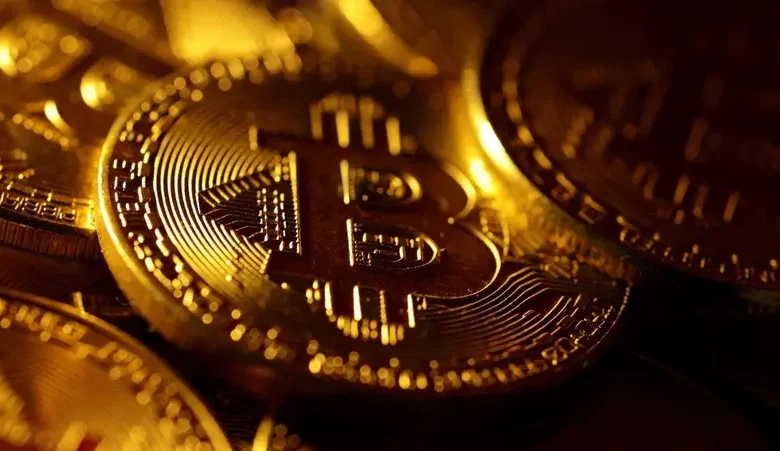Bitcoin halving 2024: Miners’ rewards cut as crypto eyes price surge

The Bitcoin network on Friday evening executed its fourth “halving,” reducing the mining rewards from 6.25 bitcoins to 3.125 bitcoins.
Bitcoin, the leading cryptocurrency globally, finalized its anticipated “halving” event, a significant occurrence that transpires approximately every four years, as reported by CoinGecko, a firm specializing in cryptocurrency data and analytics.
Halving previously occurred in 2012, 2016, and 2020, where Bitcoin’s value surged approximately 93-fold, 30-fold, and 8-fold, respectively, from its price on the day of the halving to its peak in each cycle, as per data by Coin Metrics.
The cryptocurrency market had eagerly anticipated this year’s Bitcoin halving event, with anticipation building around its potential impact on Bitcoin’s valuation, mining dynamics, and the broader digital asset landscape. This event, set against the backdrop of the US’ approval of Bitcoin exchange-traded funds (ETFs), stands as one of the most pivotal developments in the cryptocurrency world for the year.
The halving, a built-in deflationary mechanism, will slash mining rewards in half, effectively decreasing the new supply of Bitcoin. This reduction will create a supply squeeze, potentially driving up Bitcoin’s price due to increased demand, especially in light of the institutional money flowing into Bitcoin ETFs. With fewer Bitcoins being minted and a surge in institutional bids, significant pressure on supply could result in an appreciable price premium for the circulating Bitcoin.
Experts view the halving as a crucial feature of Bitcoin’s economic model, designed to decrease its new supply by 50 percent every four years, ensuring that all 21 million Bitcoins are mined by the year 2140. This feature highlights Bitcoin’s scarcity and deflationary nature, distinguishing it from traditional fiat currencies.
Leading figures in the blockchain and cryptocurrency sectors gave Al Arabiya English insights into the halving’s anticipated consequences, focusing particularly on its implications for mining operations and Bitcoin’s energy consumption.
Expert perspectives on Bitcoin halving
Dr. Fardad Zand, Co-Founder & CEO of Wisdomise, shared his insights on the impact of halving on mining energy consumption. He notes that while the halving will necessitate doubling the effort to earn the same rewards, leading to a potential increase in energy consumption, it also poses profitability challenges for miners, particularly those using less efficient equipment.
This scenario could prompt a shift towards more energy-efficient mining hardware, altering the landscape of Bitcoin mining. Despite concerns, Zand believes that these changes may not significantly affect the global energy consumption rate of the Bitcoin network, as indicated by the Cambridge Bitcoin Electricity Consumption Index.
Yale ReiSoleil, CEO & Co-Founder of untrading.org, emphasizes the transformative nature of the halving. He predicts a substantial increase in miner revenues, driven not by the halving itself but by the expected surge in Bitcoin’s price and network activity. While a temporary dip in energy consumption may occur as less efficient miners exit the market, ReiSoleil anticipates a robust resurgence in mining activities. This increase in activity is expected to be supported by more powerful and energy-efficient mining solutions, aligning with the industry’s shift towards renewable energy sources.
ReiSoleil also argues for a reevaluation of Bitcoin’s energy usage narrative, suggesting that its consumption is relatively modest compared to the global banking system and the gold industry. As the cryptocurrency matures, the focus should be on its progress toward sustainability rather than its energy consumption in isolation.
Looking ahead
The 2024 Bitcoin halving promises to be a watershed moment, potentially reshaping the mining industry, altering market dynamics, and reinforcing Bitcoin’s position in the digital asset space. The cryptocurrency community and investors alike are keenly observing the effects of this deflationary event, with many optimistic about its long-term benefits for Bitcoin’s valuation and the evolution of more sustainable mining practices.
The event could significantly impact the price of Bitcoin, especially after the launch of the Bitcoin ETFs at the beginning of the year. With fewer Bitcoin in circulation and more institutional financial bids for the coin, we may see a supply squeeze that would place a very high premium on Bitcoin in circulation. In this equation, Bitcoin miners will generally be among the biggest beneficiaries.
This halving process happens every four years, and it’s all controlled algorithmically, and there’s nothing anyone can do to change it. Even Satoshi Nakamoto – the creator and founder of Bitcoin – can’t change it.
Bitcoin miners will now receive 3.125 Bitcoins instead of 6.25 BTC for every block they add to the cryptocurrency’s blockchain.
History of Bitcoin halving
Previous Bitcoin halvings (2012, 2016, and 2020) were literally off the charts. Bitcoin’s value rose each time, eventually reaching a new all-time high.
For example, when the halving happened in May 2020, Bitcoin was trading at around $10,000. But just 18 months later, it was trading at a new all-time high of nearly $69,000. This means an almost seven-fold increase in price within a very short period of time.










